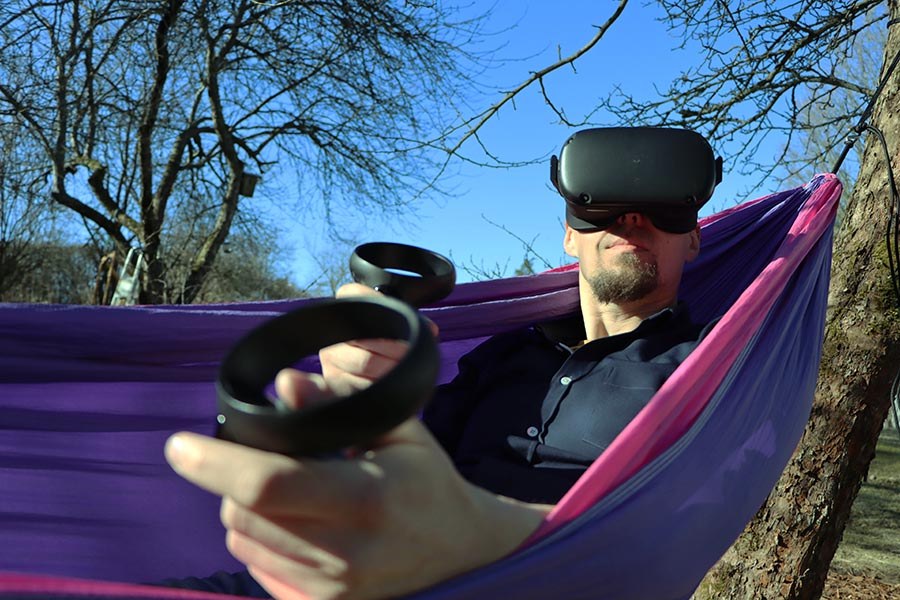New extended reality technologies are introduced to the industrial and construction sectors

“Technology has developed enormously in recent years. If you gained your experiences of, for example, VR several years ago, you should take another look. In many real estate and construction companies, VR was perhaps considered too early on. However, awareness is clearly growing. The technology is now far more advanced than just a few years ago. The concept of VR itself is already dated, and the industry is taking great leaps forward,” Pirkkalainen says.
The price of VR equipment has decreased, and their user-friendliness has improved. Increased processing power and automation, in turn, allow 3D content to be conveniently brought to virtual space.
“Several technological platforms are already available meaning that not everything needs to be done from scratch. With the help of the platforms, the introduction of new technology is also considerably cheaper,” Pirkkalainen notes.
In a field that is fast developing, the meaning of the terms keeps changing. In addition to virtual reality (VR) and augmented reality (AR), mixed reality (MR) is also being used. A new branch of research is also looking into the possibilities of multi-user, or Social Extended Reality (SXR).

COVID-19 highlighted the benefits of new technology
Virtual reality is already much used in design today. The 3D models of a building can be viewed from different angles, the view can be focused on or examined from a distance, and changes can be made to the model in a virtual mode.
Augmented reality also enables new opportunities, for instance, in maintenance work. With the help of AR, a service technician can conveniently handle a previously unknown operation by using a smart phone. Through the screen of the phone, he or she can locate the right point that needs service even through the wall of a house. Once found, the technician sees the service history of the broken device and, if necessary, receives real-time guidance from another person who may be on the other side of the world.
“On construction sites, improved remote control can save many working hours. In addition, technology prevents human errors that could be costly to correct. During the COVID-19 pandemic, we have noticed a huge demand for this technology,” Pirkkalainen explains.
We may not think about it in our daily lives, but we all have a device that utilises AR technology in various ways. Perhaps the most famous everyday application is the popular Pokémon GO game.
“A smart phone has a lot of built-in AR technology. We already have an app that can tell us what a new couch would look like in our living room. Many social media filters are based on pattern recognition. Augmented reality is already part of our everyday life, but we might not always be aware of it,” Pirkkalainen points out.
The VAM Realities project studies SMEs’ knowledge of new technology
The three-year VAM Realities research project, which was launched at the beginning of 2020, examines how well VR and AR technologies are known by European industrial SMEs. The project also provides companies with guidance on the introduction of new technology. The project has received funding from the Erasmus+ programme. Several universities and companies are involved from across Europe.
“We examine what kind of capabilities companies require to adopt this new technology, what kind of know-how already exists and what kind of know-how may be missing,” Pirkkalainen says.
At the end of the year, a report will be published giving an overview of the current situation and providing guidance to companies on the introduction of the technology.
Text and photographs: Jaakko Kinnunen
Enquiries:
Henri Pirkkalainen, Associate Professor (tenure track)
+358 504 371 567
henri.pirkkalainen [at] tuni.fi
Henri Jalo, Doctoral Researcher
+358 503 009 108
henri.jalo [at] tuni.fi
Osku Torro, Doctoral Researcher
+358 407 473 375
osku.torro [at] tuni.fi





